Abstract
In a series of 50 patients with cerebrovascular lesions (demonstrated with CT scan), seven patients had lesions located in the basal ganglia and/or thalamus. All these seven patients were apractic. Ideomotor apraxia was present in all patients; five also had constructional apraxia, and one had bucco-facial apraxia. None of the patients had utilisation apraxia. These observations indicated that apraxia is not only a "high cerebral (cortical) function", but may depend also on the integrity of subcortical circuits and structures.
Full text
PDF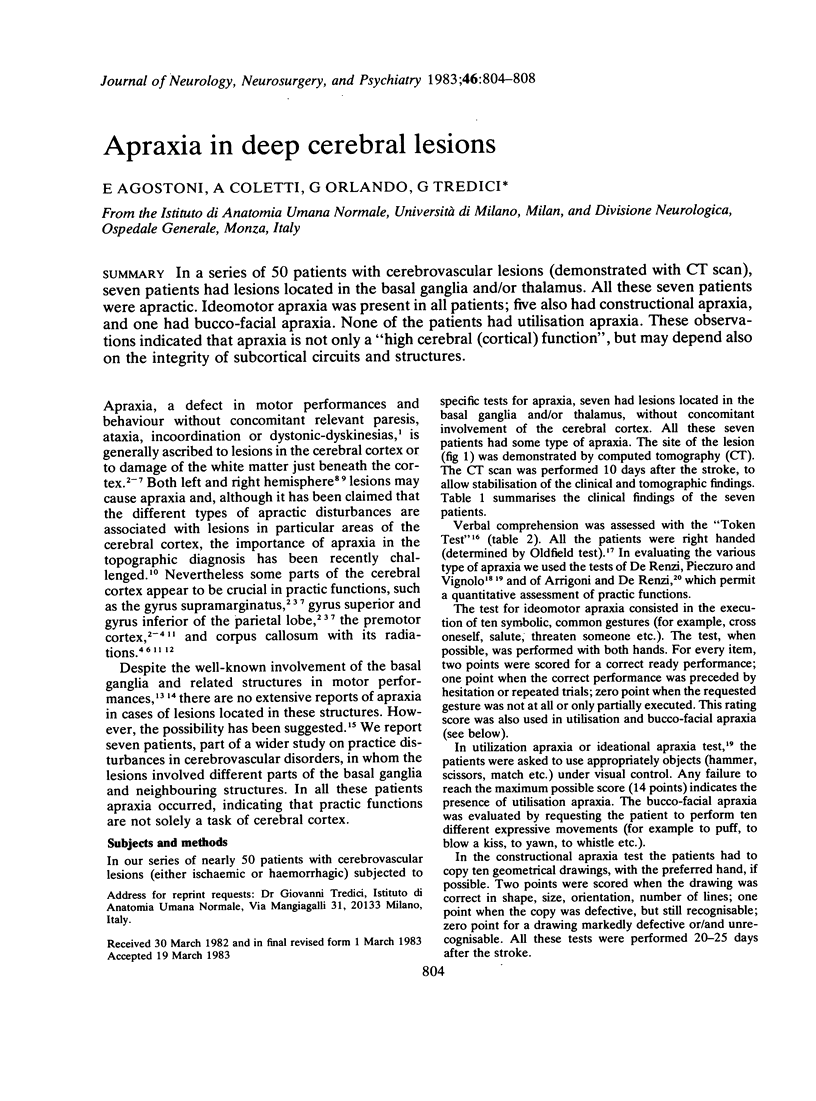
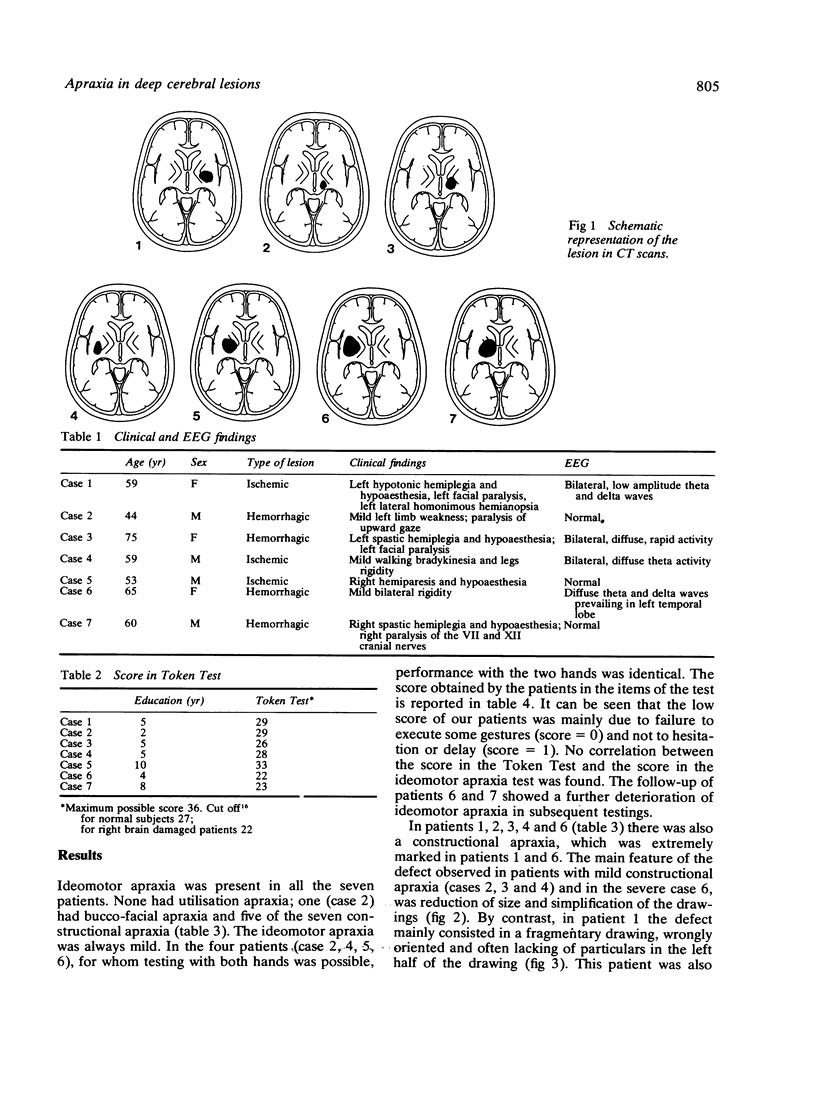
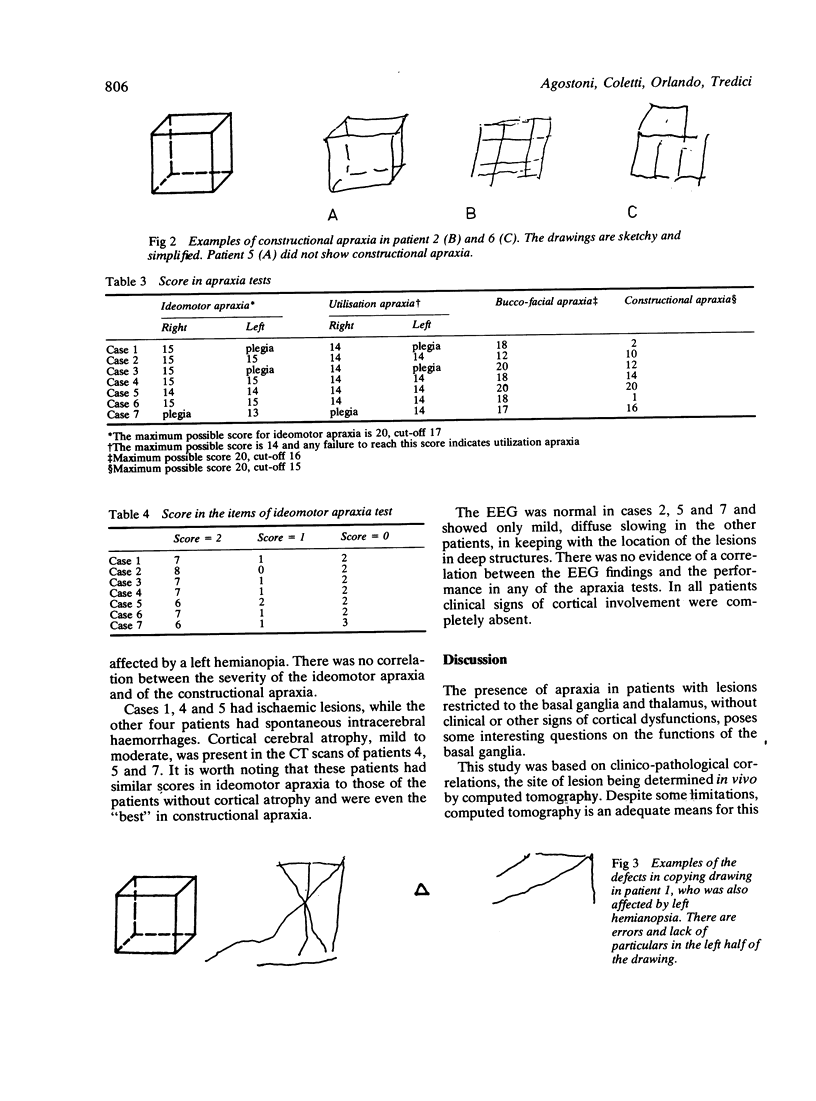
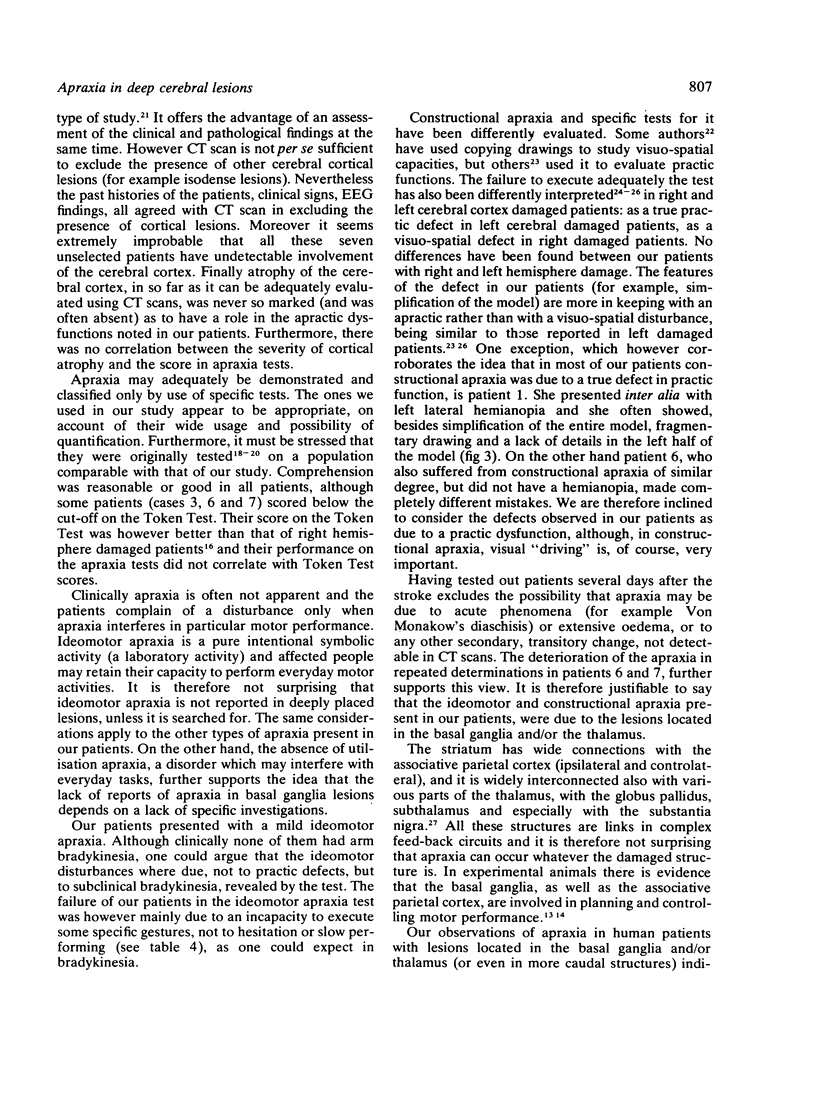
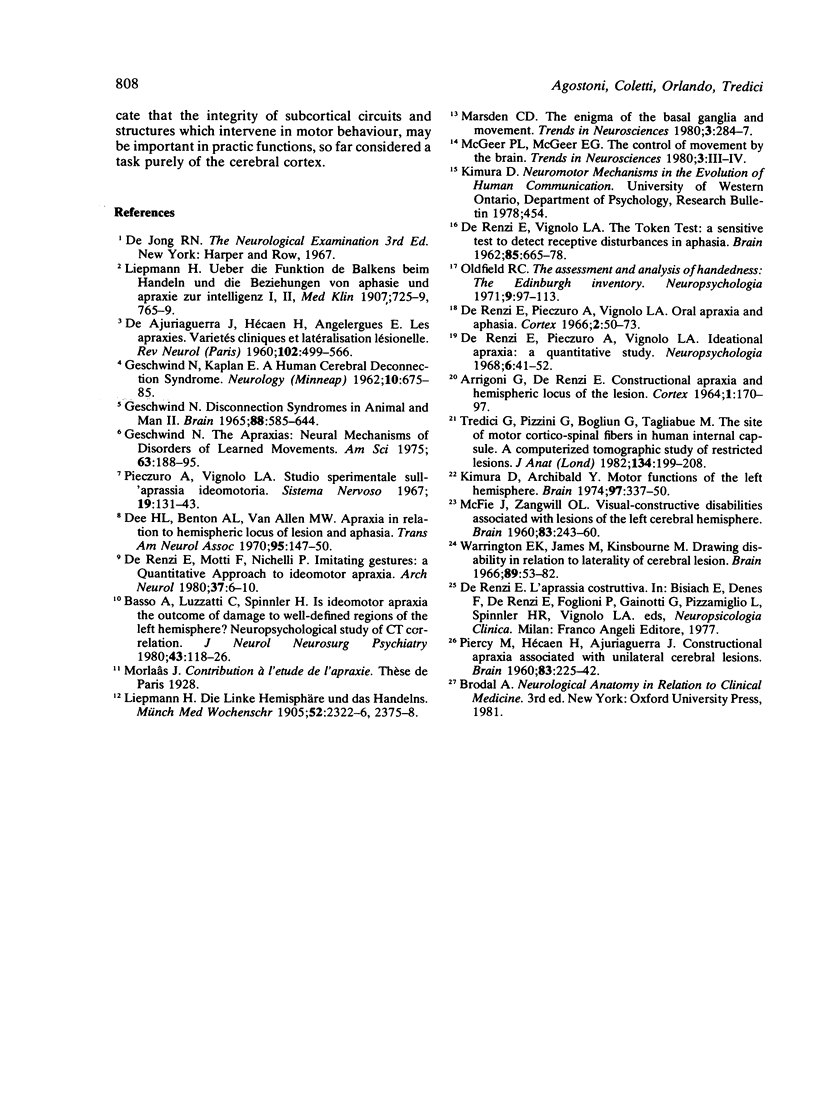
Selected References
These references are in PubMed. This may not be the complete list of references from this article.
- Basso A., Luzzatti C., Spinnler H. Is ideomotor apraxia the outcome of damage to well-defined regions of the left hemisphere? Neuropsychological study of CAT correlation. J Neurol Neurosurg Psychiatry. 1980 Feb;43(2):118–126. doi: 10.1136/jnnp.43.2.118. [DOI] [PMC free article] [PubMed] [Google Scholar]
- DE RENZI E., VIGNOLO L. A. The token test: A sensitive test to detect receptive disturbances in aphasics. Brain. 1962 Dec;85:665–678. doi: 10.1093/brain/85.4.665. [DOI] [PubMed] [Google Scholar]
- De Renzi E., Motti F., Nichelli P. Imitating gestures. A quantitative approach to ideomotor apraxia. Arch Neurol. 1980 Jan;37(1):6–10. doi: 10.1001/archneur.1980.00500500036003. [DOI] [PubMed] [Google Scholar]
- Dee H. L., Benton A. L., Van Allen M. W. Apraxia in relation to hemispheric locus of lesion and aphasia. Trans Am Neurol Assoc. 1970;95:147–150. [PubMed] [Google Scholar]
- GESCHWIND N., KAPLAN E. A human cerebral deconnection syndrome. A preliminary report. Neurology. 1962 Oct;12:675–685. doi: 10.1212/wnl.12.10.675. [DOI] [PubMed] [Google Scholar]
- Geschwind N. Disconnexion syndromes in animals and man. II. Brain. 1965 Sep;88(3):585–644. doi: 10.1093/brain/88.3.585. [DOI] [PubMed] [Google Scholar]
- Geschwind N. The apraxias: neural mechanisms of disorders of learned movement. Am Sci. 1975 Mar-Apr;63(2):188–195. [PubMed] [Google Scholar]
- Kimura D., Archibald Y. Motor functions of the left hemisphere. Brain. 1974 Jun;97(2):337–350. doi: 10.1093/brain/97.1.337. [DOI] [PubMed] [Google Scholar]
- Oldfield R. C. The assessment and analysis of handedness: the Edinburgh inventory. Neuropsychologia. 1971 Mar;9(1):97–113. doi: 10.1016/0028-3932(71)90067-4. [DOI] [PubMed] [Google Scholar]
- PIERCY M., HECAEN H., de AJURIAGUERRA Constructional apraxia associated with unilateral cerebral lesions-left and right sided cases compared. Brain. 1960;83:225–242. doi: 10.1093/brain/83.2.225. [DOI] [PubMed] [Google Scholar]
- Pieczuro A., Vignolo L. A. Studio sperimentale sull'aprassia ideomotoria. Sist Nerv. 1968 May-Jun;19(3):131–143. [PubMed] [Google Scholar]
- Tredici G., Pizzini G., Bogliun G., Tagliabue M. The site of motor corticospinal fibres in the internal capsule of man. A computerised tomographic study of restricted lesions. J Anat. 1982 Mar;134(Pt 2):199–208. [PMC free article] [PubMed] [Google Scholar]
- Warrington E. K., James M., Kinsbourne M. Drawing disability in relation to laterality of cerebral lesion. Brain. 1966 Mar;89(1):53–82. doi: 10.1093/brain/89.1.53. [DOI] [PubMed] [Google Scholar]


